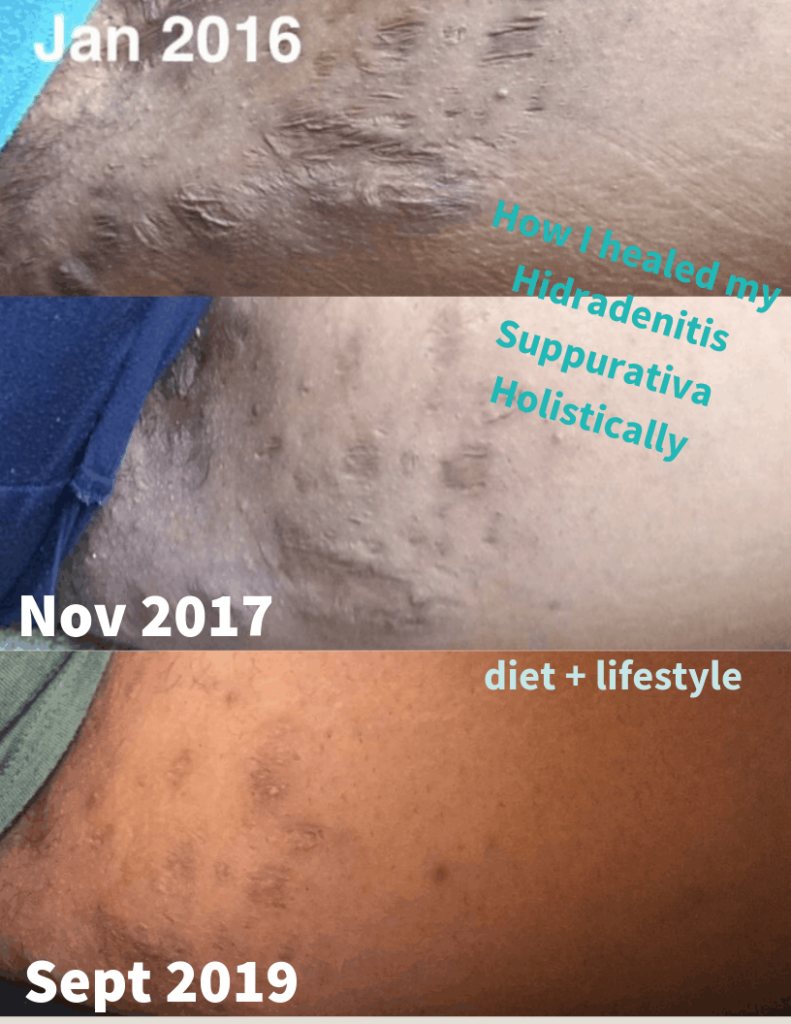Your cart is currently empty!

GLP-1 Medications for Hidradenitis Suppurativa: My Personal Experience & What the Research Says
Hi, I’m Cristina Curp—HS warrior, holistic nutritionist, cookbook author, chef, and longtime advocate for using food as medicine. Over the last decade, I’ve helped thousands in the chronic illness community find tools to reclaim their health—whether they’re managing HS through diet alone, using biologics, or recovering from surgery. As a holistic nutritionist, my goal is to help you use what you eat as a tool to support your journey!
Today I want to talk about something that’s been a huge topic in our community lately: GLP-1 medications like Ozempic, Wegovy, and Mounjaro, and their impact on Hidradenitis Suppurativa. This post includes my personal experience, what I’ve seen in others, and the latest research behind why these medications may be helping.
Why I Started GLP-1 Medication After 8 Years in Remission
It’s been nearly a decade since I completely overhauled my diet and lifestyle in an effort to get my HS under control. At the time, I was about to turn 30 and truly didn’t think I’d make it to 40 (which I am next month). My skin was constantly inflamed. I had done rounds and rounds of antibiotics, tried birth control, and nothing felt like a long-term solution. So I took matters into my own hands.
Through gut healing, blood sugar regulation, and a lot of trial and error with food triggers (AIP elimination diet, and re-intro), I was able to achieve remission. It took two years to get there—and I’ve now been in remission for over eight. (You can read my full remission journey here).
But in recent years, even though my skin wasn’t flaring, I wasn’t feeling good. I was under chronic stress in a toxic relationship, and I believe the nonstop cortisol dump started breaking down my body in subtle but real ways. I went to my doctor and said, “I’ve done everything I can on my own—I need support.”
We ran blood work. My cholesterol was elevated. And based on my BMI, I was prescribed Ozempic (semaglutide), a GLP-1 receptor agonist originally developed for type 2 diabetes, now widely used for weight management. My doctor noted the benefits to inflammation and we went over possible side effects.
I Was Skeptical at First
After years of bad experiences with medications—especially antibiotics, which now make me feel violently ill—I was hesitant. But it was actually you, my community, sharing your experiences with GLP-1s that made me brave enough to try. And I’m so glad I did.
Because this medication has given me more flexibility in how I care for myself. Where I once had to be rigidly perfect with my food choices to feel good, I now have more grace. I can enjoy life a little more while still feeling well in my body. And that’s a gift.

What the Research Says About GLP-1s and HS
While clinical research is still in early stages, several studies support what many of us in the HS community have seen anecdotally:
- A 2024 study of patients with HS found that semaglutide reduced the frequency of flares and systemic inflammation—flaring decreased from once every 8.5 weeks to once every 12 weeks.
➤ Source – NYPost Summary
➤ Full Study – MDPI Journal - The mechanisms? GLP-1 RAs lower inflammation by:
- Suppressing pro-inflammatory cytokines like TNF-alpha and IL-17
- Activating anti-inflammatory pathways like AMPK
- Improving insulin sensitivity and reducing visceral fat
- Modulating immune cell activity through GLP-1 receptor expression
➤ Scientific Review – PMC
➤ News Roundup – TIME
What I’ve Heard from the Community
As I shared my journey online, many of you reached out. Some have seen their HS go into remission for the first time. Others have seen major improvements in inflammation, energy, and blood sugar control. A few people have reported no improvement or even temporary flares—especially with rapid weight loss, which can cause hormonal shifts and skin changes that worsen HS short-term.
That’s real. And it’s also a reminder: GLP-1s aren’t a miracle drug, but for some, they are a useful tool.
Final Thoughts: It’s Not About Size—It’s About Inflammation and Blood Sugar
Let me be clear: HS is not caused by body size. I was in remission at 250 pounds and I’m in remission now at 190 pounds. For me, the benefits of GLP-1s have been more about blood sugar stability, less systemic inflammation, and improved food tolerance than just weight.
But I’ll admit—losing weight has made some aspects of life easier (like working on my feet all day is less taxing). And since HS can make movement and self-care hard, I’ll take any support that helps me stay consistent with the habits that keep me in remission.
I don’t believe GLP-1s are the only answer—but they are one option. And for those of us with a long history of fighting to feel good, having another tool in the toolbox can be life-changing.
Resources & Further Reading
- Semaglutide Study on HS Patients – MDPI
- GLP-1s as Anti-Inflammatory – PMC
- News Summary: Ozempic for HS – NYPost
- Time Magazine on GLP-1s Beyond Weight Loss





Leave a Reply